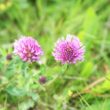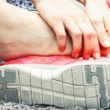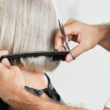If you are a gym junkie, a sports buff or overweight, you are prone to experience skin chafing. It is an annoying and often painful result of skin rubbing against skin or clothing. It occurs anywhere on your body but these specific parts are vulnerable to getting it: thighs, groin, underarms and nipples.
Skin chafing happens when there is friction caused by rubbing that leads to skin injury. It worsens with excessive pressure and force, heat, humidity and perspiration. Sweat adds to friction because similar to a sandpaper, it grinds your skin. Even excessive dryness and cold can aggravate skin chafing.
Other causes that contribute to skin chafing are too tight or too loose clothing, long distance running and cycling activities, excess moisture due to sweat or water sports, overly developed muscles from exercise, repetitive movements, sensitive skin, heat and hot weather, tight or ill-fitting shoes, extra body weight, as well as fabrics that don’t wick moisture away.
Persistent skin injuries from rubbing range from rash to irritation, burning, blisters and raw skin, you have open wound susceptible to infection.
How do you prevent skin from chafing? You have to do something to prevent your skin from rubbing and make them part of your routine when you dress-up before exercise. Here are brilliant ways to do it.
- Consider your clothing. When you exercise, wear proper clothing. Choose proper-fitting, moisture-wicking clothes made with synthetic fibers. Avoid cotton clothes when exercising because it stays wet. Wear compression clothes similar to those worn by cyclists as they may help reduce thigh chafing. Pick exercise clothes and bras with smooth and covered seams to avoid rubbing against your skin. Less is more when you exercise. Women can wear sports bra while doing their exercise routines.
- Stay dry. Before you begin with your routine, apply talcum and alum powders to areas that get the most sweat. Applying powder can help wick moisture away from the skin. After your exercise, change your clothing so you won’t expose your skin to wet clothes due to sweat.
- Lubricate. Put petroleum jelly or similar product to hot spots. Lubricants can prevent too much friction to the skin. Petroleum jelly is less expensive lubricant available over the counter. To diminish nipple chafing, apply petroleum jelly, patches or tape over it to reduce friction. When running or cycling far distance, bring travel-sized deodorant to help reduce sweat between your thigh areas. Re-apply as needed.
- Hydrate. Drinking minimizes salt concentration content of sweat.
- Moisturize. Applying lotion twice a day lessens susceptibility of chafing your skin. Make sure you moisturize daily.
If you experience chafing, there are treatments available. Shower after exercise. Use lukewarm water and antibacterial soap to wash away bacteria from your skin. Gently clean the chafed area with water and dry it thoroughly. Once it is cleaned, apply petroleum jelly on the affected area. If the area is painful, swollen, bleeding or crusted, your doctor may recommend a medicated ointment.
Let it heal before you return to your exercise routine. Continued friction will only worsen your condition and could lead to infection. If chafing persists, see your doctor for further treatment.













